Across the globe, the fabric that has been a favorite is Cotton. It is soft, breathable, and suited for all climates. But did you know that not all cotton is the same? Selecting the softest cotton fabric is an art. Whether it’s a warm summer day or a chilly winter night, the right cotton fabric can make a world of difference.
In this guide, I will accompany you through the process of choosing the softest cotton fabric for any season. I’ll explain the different types of available cotton and how to identify quality materials. You will be able to select cotton fabrics that provide comfort at all times.
Table of contents
- Examining What Makes Cotton Fabric Soft
- Cotton Varieties Recognized For Their Softness
- Best Weaves for Softness in All Seasons
- Explaining Why Cotton Stands Out as the Best Choice for Every Season
- How to have Quality Assessment of Cotton Fabric Before Purchase:
- How To Maintain Soft Cotton Fabrics
- What People Get Wrong About The Softness Of Cotton Fabrics
- Common Uses of Softest Cotton Fabric
- Advice on Buying Cotton Fabrics Online
- Reasons Why Buying Soft Cotton is a Good Idea
- Conclusion
- FAQS
Examining What Makes Cotton Fabric Soft
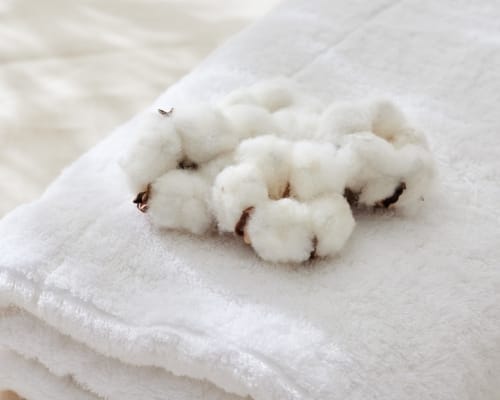
The cotton fiber’s structure provides softness to cotton. Softer fabrics tend to have finer and longer fibers. This is the reason why Pima and Egyptian cotton are recognized worldwide for their softness. Check the fiber length and weave style because they indicate a lot about the comfort level.
Furthermore, softer cotton tends to be smooth and drapes well. Pay attention to the ease of the fabric; usually, tight weaves are softer. Nevertheless, you want effective ventilation, so moderation is essential.
Cotton Varieties Recognized For Their Softness
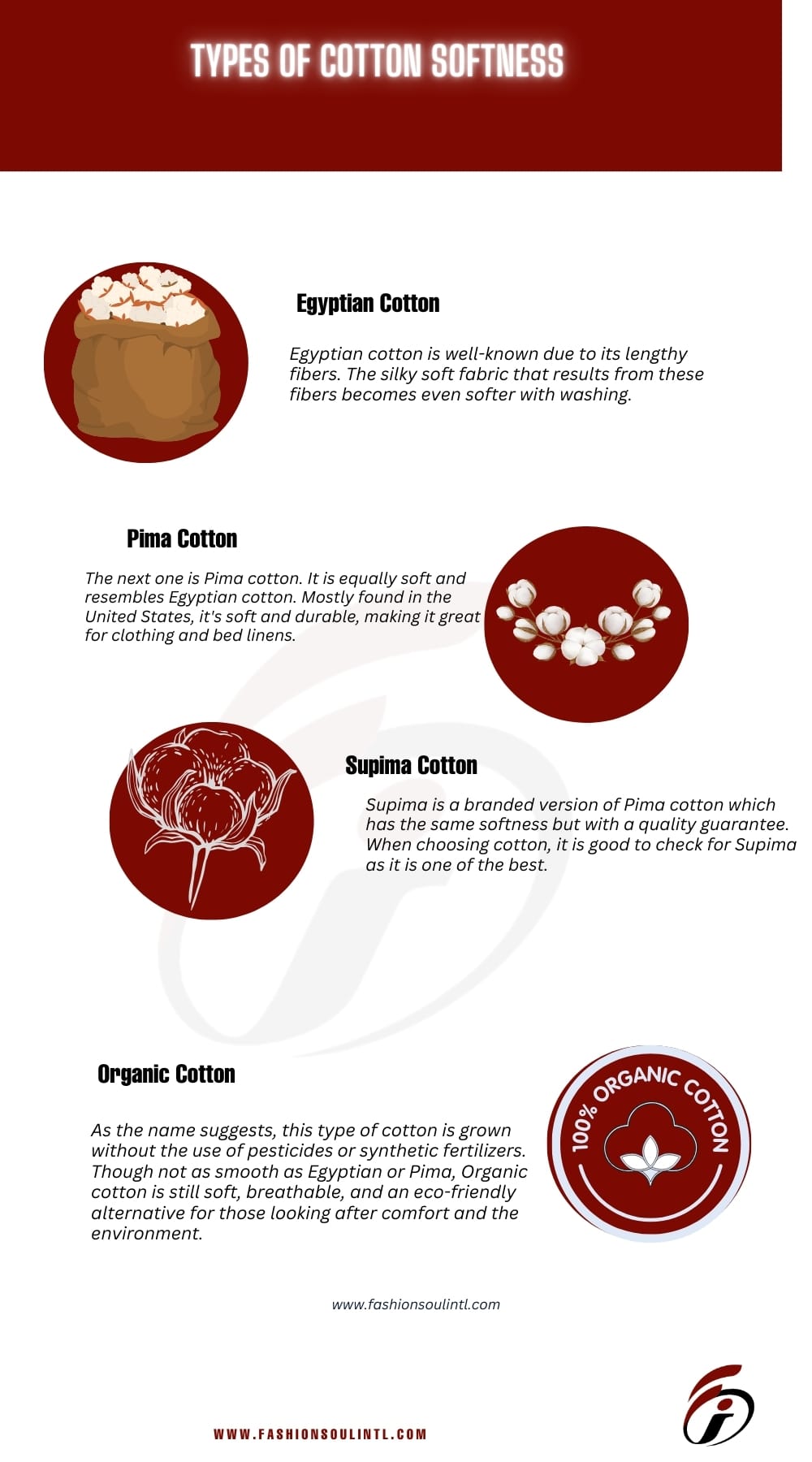
If comfort is your priority, you must have a thorough understanding of the softest cotton fabric varieties before you start your search. Here are the best suggestions:
Egyptian Cotton
Egyptian cotton is well-known due to its lengthy fibers. The silky soft fabric that results from these fibers becomes even softer with washing. It is suitable for both summer and winter due to its cooling and comforting properties.
Pima Cotton
The next one is Pima cotton. It is equally soft and resembles Egyptian cotton. Mostly found in the United States, it’s soft and durable, making it great for clothing and bed linens.
Supima Cotton
Supima is a branded version of Pima cotton which has the same softness but with a quality guarantee. When choosing cotton, it is good to check for Supima as it is one of the best.
Organic Cotton
As the name suggests, this type of cotton is grown without the use of pesticides or synthetic fertilizers. Though not as smooth as Egyptian or Pima, Organic cotton is still soft, breathable, and an eco-friendly alternative for those looking after comfort and the environment.
Best Weaves for Softness in All Seasons
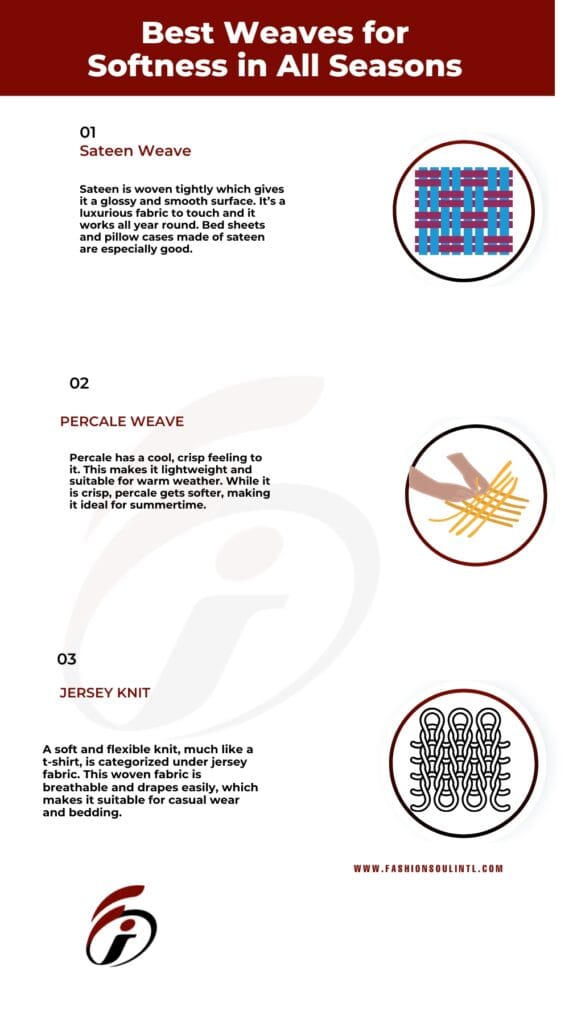
Finding the softest cotton fabric requires going beyond the fiber type. The type of weave also is of importance to how the fabric feels.
Sateen Weave
Sateen is woven tightly which gives it a glossy and smooth surface. It’s a luxurious fabric to touch and it works all year round. Bed sheets and pillow cases made of sateen are especially good.
Percale Weave
Percale has a cool, crisp feeling to it. This makes it lightweight and suitable for warm weather. While it is crisp, percale gets softer, making it ideal for summertime.
Jersey Knit
A soft and flexible knit, much like a t-shirt, is categorized under jersey fabric. This woven fabric is breathable and drapes easily, which makes it suitable for casual wear and bedding.
Explaining Why Cotton Stands Out as the Best Choice for Every Season
Cotton is highlighted for its natural solar breathabiility. In the summer, it removes moisture from your skin, while in winter, it keeps the body warm without trapping sweat. This balance explains why cotton stays a year-round favorite.
Adaptation is a forté of the softest cotton fabric. It keeps you fresh when it hot without suffocation whereas in colder days it makes you snug. The level of easiness in care also helps cotton claim the biggest bonus for daily wear.
How to have Quality Assessment of Cotton Fabric Before Purchase:
Not all cotton fabrics are created equal. Here’s how to spot the best:
- The Felt Tells A Lot: Touch can convey a lot of information. Gently rubbing it with your finger should reveal smooth and even surface with no rough patches present.
- The Weave Focused Examination: Looking into the weave under a light. Strands of yarn tightly bound to suggest softness and increased reactions to wear n’ tear.
- Check the Label: Prefer “long-staple” or “Egyptian” or “Pima” chances are you will find softer cotton.
- Strength Testing: Using your fingers and applying controlled stretch into the small part, it may be assumed best would be taut. Elasticity of quality.
How To Maintain Soft Cotton Fabrics
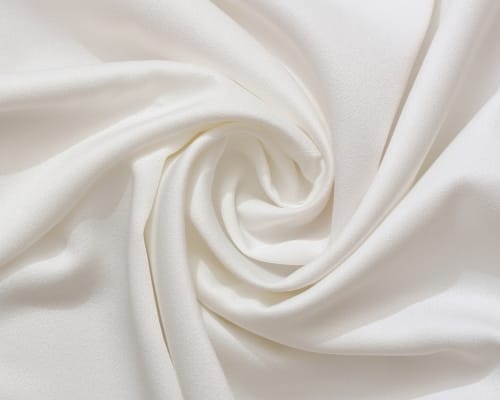
After you have selected the softest cotton fabric, it is important to maintain its texture. Here is how to do it:
- Wash using cold water to avoid any shrinkage.
- Use mild detergents to help retain fibers.
- Prevent overdrying since heat weakens fibers.
- If needed, iron on a low heat setting, or let the fabric be for a more relaxed look.
Fabrics made of cotton require special attention to retain their softness and beauty over time, without compromising on their durability.
What People Get Wrong About The Softness Of Cotton Fabrics
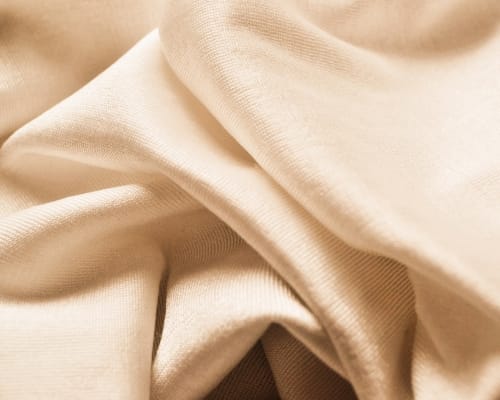
There is a misconception that all cotton feels the same, which is false. This is determined by the length of the fiber, the weave, and the post-processing treatment.
That myth makes it difficult to accept that higher thread count does not necessarily guarantee tenderness. While it does have some importance, softer cotton providers are equally important. This means a poor quality thread count of 1000 would not feel as nice as a 300-thread-count Egyptian cotton.
Common Uses of Softest Cotton Fabric
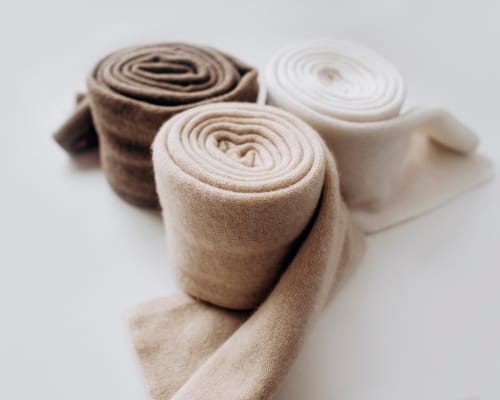
One thing to note is, the softest cotton fabric is very multifunctional and these are some of its best uses:
- Clothing: Soft cotton improves t-shirts, dresses, and even underwear.
- Bedding: Quality cotton translates into better feeling sheets, pillowcases and duvet covers.
- Baby Products: Swaddles, onesies and blankets require extra softness.
- Home Textiles: A soft cotton makes curtains and cushion covers warm and inviting.
Advice on Buying Cotton Fabrics Online
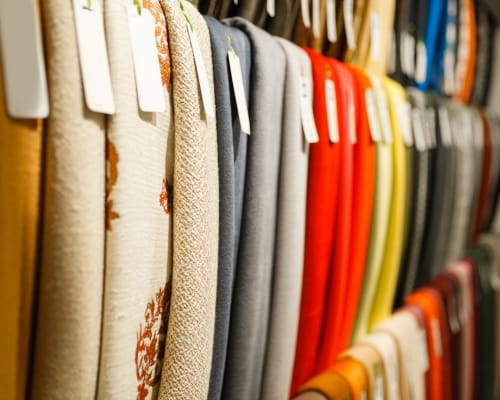
Shopping online is difficult when you can’t touch the fabric. Here’s how to get it right:
- Peruse Reviews: Other buyers usually describe the upholstery’s softness which is helpful.
- Search for Certifications: Labelled experts assure quality.
- Look Over Return Policies: You should be able to return items that don’t fit your requirements.
Reasons Why Buying Soft Cotton is a Good Idea
Purchasing good-quality cotton may come at a premium, but they do pay off. Soft cotton has better durability and feel over time. You spend less money replacing them more infrequently. Adding to the value, their comfort is unmatched.
Conclusion
Identifying the softest cotton fabric for every season becomes straightforward when you know the right factors to examine. Look for fiber length, weave type, and quality. With proper care of the right cotton, one will not only be comfortable, stylish, but also ready to face any seasonal challenges.
FAQS
Egyptian and Pima cotton are known as the softest types. They have long fibers that create smooth, silky fabric.
Organic cotton can be just as soft, especially when woven well. It also offers the added benefit of being eco-friendly.
Yes! Cotton holds warmth well and layers beautifully, making it great for winter, especially when blended with other fibers.

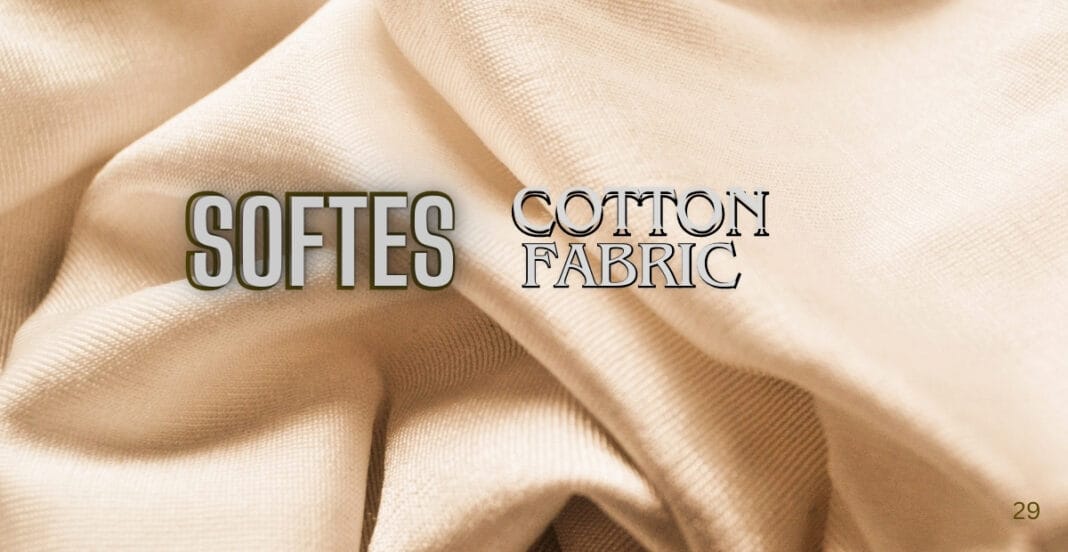

This post clarified a lot for me—especially how certain cotton types remain breathable in summer but cozy in winter. It’s easy to overlook how much the fabric’s weave and finish impact year-round comfort, so this was super helpful.
Hello pals!
I came across a 110 valuable tool that I think you should take a look at.
This tool is packed with a lot of useful information that you might find insightful.
It has everything you could possibly need, so be sure to give it a visit!
[url=https://www.filter.hu/cikkek/3167/a-legujabb-kutyuk-amik-szetcsapjak-a-mindennapokat]https://www.filter.hu/cikkek/3167/a-legujabb-kutyuk-amik-szetcsapjak-a-mindennapokat[/url]